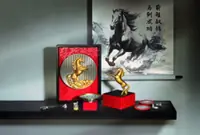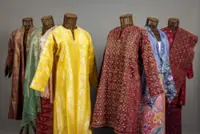An artwork titled "The Outlaws Flag", created by Thai artist Jakkai Siributr, is seen at the recent Art Basel Hong Kong. Photo: AP
As thousands of visitors streamed through a Hong Kong exhibition hall and deals were struck for works by Picasso and Yayoi Kusama, art collectors celebrated the Asian financial hub's return to its bustling heyday.
The scenes at Hong Kong's Art Basel fair last week had not been seen since 2019, with a crackdown on pro-democracy protests and pandemic restrictions in the intervening years radically transforming the city.





